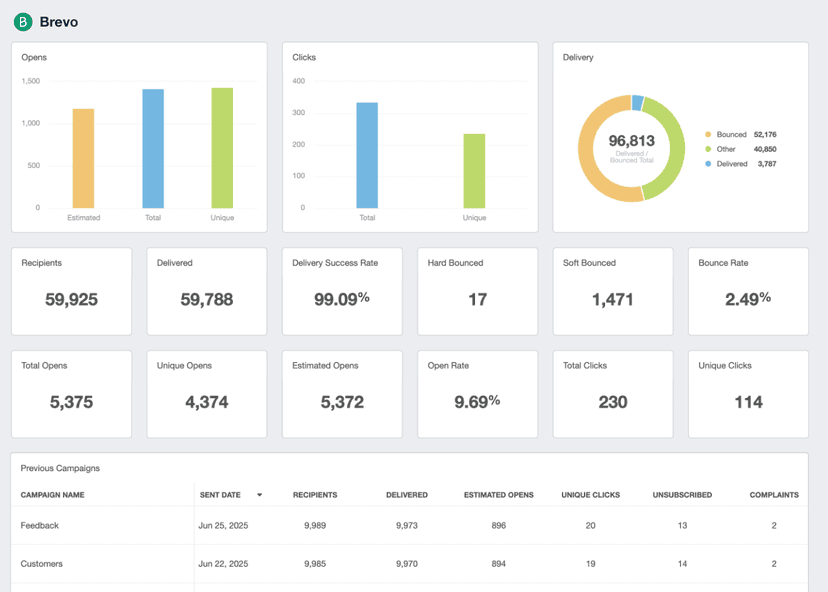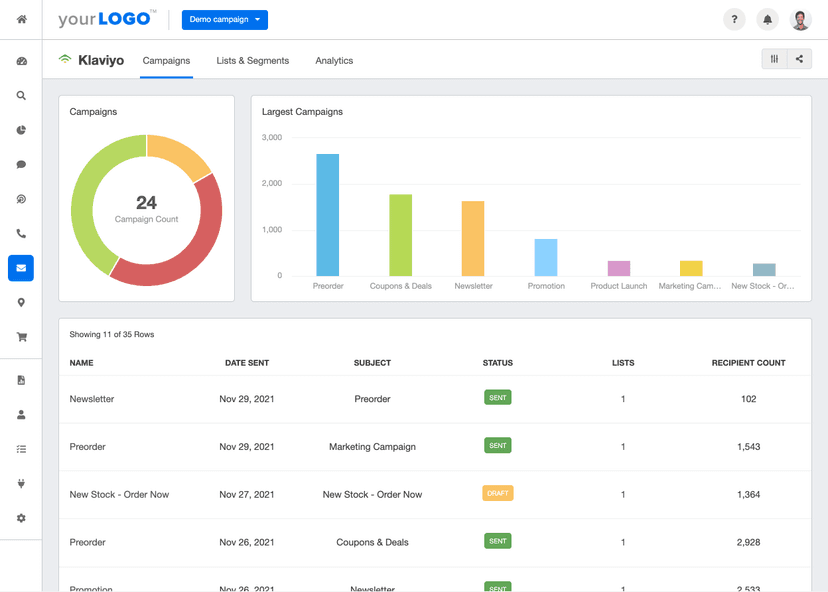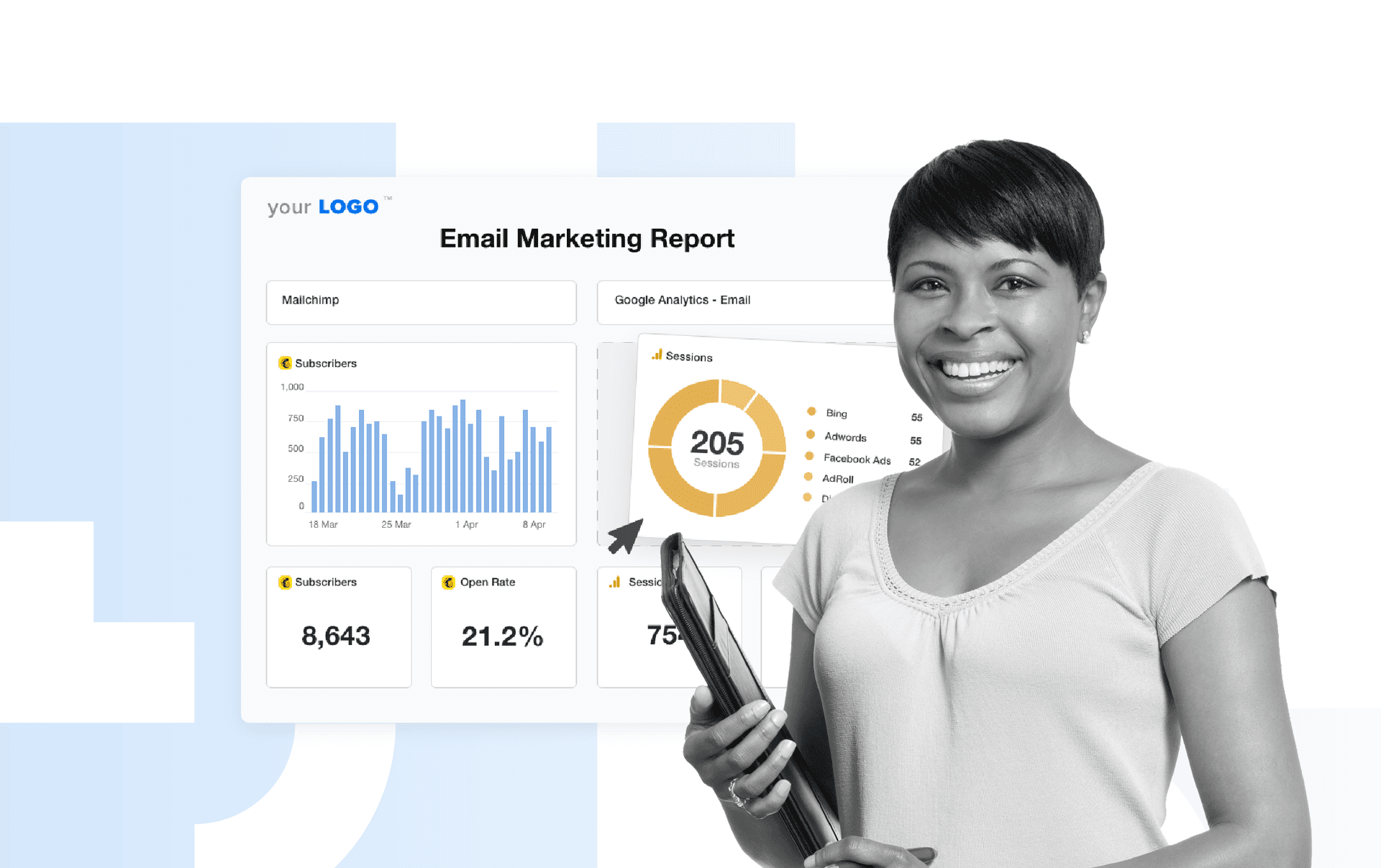Email Delivery Rate
List Cleanup
Obsolete email addresses hurt deliverability. Keep the lists fresh.
ISP Monitoring
High delivery rates means a client is on good terms with Internet Service Providers.
Client Reports
High rates validate the agency's effectiveness and boost client trust.
Optimize Content
Tweak subject lines to steer clear of spam filters.
Why Email Delivery Rate Is Important
Getting an email to an inbox is the first half of the battle. When emails fail to reach inboxes, every subsequent performance indicator becomes irrelevant. Imagine sending out a fabulous newsletter but missing half the audience because the emails got stuck in the spam folder.
This metric serves as an early warning system for email marketing campaigns and indicates how well an email campaign clears the initial–yet critical–hurdle of inbox placement. An accurate measurement of this rate ensures that marketing messages have the potential to be seen, opened, and acted upon.
Stop Wasting Time on Manual Reports... Get Email Insights Faster With AgencyAnalytics
How Email Delivery Rate Connects with Other Email KPIs
Delivery rate sets the stage for other metrics like open and click rates. A poor average Email Delivery Rate is a red flag; it drags down these interconnected metrics and paints an incomplete or misleading picture of an email marketing campaign's success. For instance, a high Email Open Rate isn't impressive if the deliverability rate is low. In that case, only a small subset of the target audience gets and opens the emails.
Email Bounce Rate is another metric that closely interacts with email deliverability. When an email bounces, it can't be delivered to the recipient's mailbox because of an invalid email address or a server issue. Excessive bounces could flag the sender as unreliable or even spammy in the eyes of email service providers. This jeopardizes the delivery rate and the sender's reputation, making it harder for future emails to find their way to inboxes.
Factors That Impact Email Deliverability
A sender's digital reputation determines the likelihood of their emails reaching recipients' inboxes, with a poor reputation leading to more emails marked as spam. Several factors will contribute to a dip in the sender's reputation:
HIGH SPAM COMPLAINTS: If recipients mark emails as spam, ISPs take note.
LOW ENGAGEMENT RATES: If emails are not being opened or interacted with, that's a red flag for ISPs.
FREQUENT EMAIL BOUNCES: Invalid or inactive email addresses cause emails to bounce back, making ISPs wary of email messages from that sender.
OUTDATED EMAIL LISTS: Keeping 'dead' email addresses on an email list will harm the sender's reputation, as ISPs might consider the email practices sloppy.
By maintaining good sender habits and regular list hygiene, agencies avoid these pitfalls and keep the relationship with ISPs in good standing. A high rate confirms effective inbox placement, reinforcing the strategic decisions behind the campaign.
Technical Foundations of Email Deliverability
Understanding the technical aspects of email deliverability involves digging into the mechanics of how emails find their way to a recipient's inbox. Central to this process is email authentication, including frameworks like Sender Policy Framework (SPF) and DomainKeys Identified Mail (DKIM). These protocols serve as a digital handshake between email service providers, ensuring that an email claiming to come from a particular domain is legitimate.
Internet Service Providers (ISPs) act as gatekeepers, using these authentication standards to filter out unwelcome guests like spam. Like a vigilant watchman, an ISP scrutinizes incoming mail, uses SPAM traps to catch and blocklist operators who are not following email best practices, and decides if an email is worthy of the inbox or destined for the shadowy depths of spam folders. The dance of emails bouncing from server to server ends in triumph when the sender's reputation, fortified by SPF and DKIM, clears the path to the inbox.
Bounce rate is important to keep an eye on as it can lead to issues with delivery rates down the line. You always want to sanitize your email lists and make sure you aren’t getting high bounce rates.
How To Calculate Email Delivery Rate
Various factors, including sender reputation, IP addresses, and the algorithms of email service providers, impact email deliverability. Poor email deliverability often leads to emails landing in the spam folder, affecting the credibility and effectiveness of email campaigns run through email marketing platforms.
To calculate the Email Delivery Rate, divide the number of successfully delivered emails by the total number of emails sent. This result is then multiplied by 100 to convert it into a percentage.
Email Delivery Rate Formula Example
What Is a Good Average Email Delivery Rate?
A good average email deliverability hovers around 90% to 98%. At this level, it's a strong indicator that the email list is healthy, the content is inbox-friendly, and the relationship with email service providers is solid.
What Is a Bad Average Email Delivery Rate?
Anything below 80% should immediately raise some red flags. A rate this low suggests problems like outdated email lists, poor sender reputation, or content that triggers spam filters. Immediate action is needed to avoid long-term damage to the campaign.
How To Set Email Deliverability Benchmarks & Goals
When dealing with a client with previous deliverability issues, an agency may need to adjust the standard benchmarks. A more cautious approach to list hygiene is advisable, which might mean tolerating a lower average deliverability rate during the clean-up phase.
Email deliverability tools and tests available through the email marketing platform help identify domain reputation, subject lines that work, and even the reasons messages failed to reach subscribers' inboxes. The agency should then focus on removing inactive subscribers and taking other steps to improve deliverability.
Digging deep into these variables makes it easier to identify the bottlenecks affecting email deliverability and set realistic goals for steady improvement in delivery rates.
Why Email Delivery Rate Matters to Clients
Email Delivery Rate is crucial for clients because it signifies the percentage of emails successfully reaching recipients' inboxes.
A high delivery rate is essential for ensuring that marketing campaigns effectively reach their target audience, maximizing the potential for engagement, conversions, and return on investment.
A low delivery rate can indicate issues like poor email list quality or spam filter triggers, leading to diminished campaign effectiveness and potential harm to sender reputation.
Why Email Delivery Rate Matters to Agencies
High email deliverability indicates a focus on maintaining clean email lists to achieve optimal deliverability rates.
This metric is essential for agencies to prove their competence in sending emails that avoid spam filters and secure a position in engaged subscribers' inboxes, reinforcing the agency's good standing with clients.
Save Time and Money By Automating Your Client Reporting
Best Practices When Analyzing and Reporting on Email Deliverability
Proper analysis of email deliverability paves the way for more efficient and impactful email marketing campaigns. Let's look at how to dissect this metric for actionable insights.
The Timely Impact of Email Delivery Rate
Looking at Email deliverability over time helps identify inconsistencies or declines affecting email deliverability. If sudden drops occur, it might be time to evaluate the email marketing service used and check if the IP reputation is compromised.
Compare Campaigns
Comparing email deliverability across multiple email campaigns helps identify if a particular email message or subject line reduces deliverability. This calls for regular email deliverability tests and adjustments to the email marketing strategy.
Decode Patterns & Oddities
Identifying trends and anomalies in email deliverability helps clarify the metrics at a granular level. For instance, a high number of bounced emails or spam reports from mailbox providers is an indicator that the sender's domain or sender's server needs scrutiny.
Contextualize Email Deliverability
Context offers a clearer picture of how internet service providers view incoming emails. For example, if deliverability is low but open rates are high, it's clear that the content is engaging, but there's a bottleneck in the delivery process. Showing how those bottlenecks are being cleared paints a clear picture of the agency's email success.
Visualize the Data
Charts, graphs, or color-coded stats helps make complex data easy to understand, instantly conveying whether the campaign reaches the primary inbox or is blocked by the receiving server. Not all email marketing platforms offer delivery rate as a native metric, but it’s easy to create a custom metric by dividing the number of emails delivered by the number of emails sent.
Tie Into Client Goals
The ultimate aim is to connect the metric to what the client cares about most—ROI, conversions, or engagement. Translate good email deliverability rates into potential customer interactions and then further into sales or other end goals. This adds layers of meaning to what could otherwise be sterile percentages and data points.
FAQs About Understanding and Improving Email Delivery Rate
Email delivery rate is one of the most important metrics for email marketers. These FAQs explain how it’s calculated, what affects deliverability, and how agencies can help clients ensure legitimate emails reach their subscribers’ inboxes.
Email delivery rate measures the percentage of sent emails that are accepted by the recipient’s server. It is calculated as the number of emails accepted divided by the total number of emails sent, minus hard bounces and soft bounces. A good email deliverability rate means most emails are reaching subscribers’ inboxes.
Email delivery rate measures whether incoming email is accepted by the recipient’s server and delivered to the user’s mailbox. Open rate, on the other hand, measures whether the email appears in the subscriber’s inbox and is opened by the recipient. Together, these metrics help email marketers identify issues, improve campaign performance, and ensure legitimate emails are reaching and engaging subscribers.
Email delivery rate is critical because email deliverability affects overall campaign performance. If emails don’t land in a person’s inbox, engagement metrics like open rate, engagement rate, and conversions suffer. Maintaining a high delivery rate ensures that emails reach recipients’ inboxes.
Several factors can cause deliverability issues, including sending mass emails from a poor sender reputation score, unverified IP addresses, or outdated mailing lists. Hard bounces from invalid addresses, inconsistent sending schedules, and poor email content can also affect email deliverability. Internet service providers (ISPs), inbox providers, and mailbox providers all assess sender score, SPF records, and digital signatures before allowing emails into a subscriber’s inbox.
Sender reputation score is a numerical value that inbox providers and receiving servers use to determine whether your emails land in the subscriber’s inbox or get filtered out. A poor sender score often results in more deliverability issues and lower delivery rates. Using a dedicated IP address helps email marketers maintain control over their sender reputation, since the score isn’t affected by other companies’ campaigns.
To improve your email deliverability, agencies should follow best practices such as using a dedicated IP address or internet protocol, maintaining clean mailing lists through email validation, and sending emails on a regular schedule. Crafting relevant content, authenticating emails with SPF records and digital signatures, and monitoring engagement metrics like open and click-through rates also help ensure emails hit the subscriber’s inbox.
Mailchimp Dashboard Example

Related Integrations
Tips To Improve Email Deliverability
A high email deliverability rate is crucial for successful email marketing campaigns. Ensuring emails reach the receiver's inbox rather than the spam folder significantly affects Engagement and Conversion Rates.
Maintain List Hygiene
Regularly clean email lists to remove invalid or inactive subscribers. A cleaner list not only improves deliverability but also minimizes bounce rates.
Add Unsubscribe Links
An easily accessible unsubscribe link meets legal requirements and allows uninterested recipients to leave the list willingly, positively affecting email deliverability.
Use Double Opt-In
Implementing double opt-in filters out invalid email addresses and ensures subscribers genuinely want to receive the emails, improving the sender’s standing with mail servers.
Related Blog Posts
See how 7,000+ marketing agencies help clients win
Free 14-day trial. No credit card required.
















